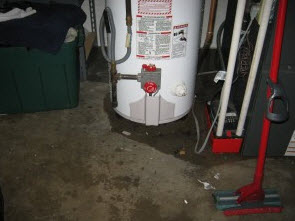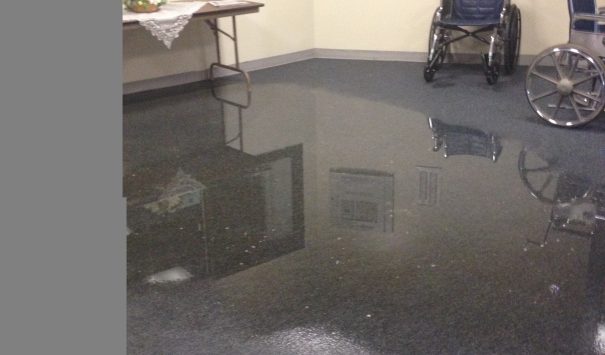We have unearthed this great article pertaining to Flushing Food Down the Toilet? down the page on the web and figured it made perfect sense to quickly share it with you over here.

Introduction
Lots of people are frequently faced with the problem of what to do with food waste, particularly when it concerns leftovers or scraps. One common concern that occurs is whether it's alright to purge food down the toilet. In this short article, we'll explore the reasons why people may consider purging food, the repercussions of doing so, and alternative approaches for correct disposal.
Reasons that individuals may consider flushing food
Absence of recognition
Some people might not understand the possible harm triggered by purging food down the toilet. They may mistakenly believe that it's a harmless practice.
Benefit
Flushing food down the toilet might look like a quick and easy option to throwing away unwanted scraps, particularly when there's no nearby garbage can offered.
Laziness
In many cases, people might just pick to flush food out of large idleness, without taking into consideration the repercussions of their activities.
Consequences of flushing food down the commode
Ecological impact
Food waste that ends up in waterways can add to air pollution and harm water communities. Furthermore, the water utilized to purge food can strain water resources.
Pipes issues
Flushing food can cause clogged pipelines and drains pipes, causing pricey pipes fixings and hassles.
Types of food that should not be flushed
Fibrous foods
Foods with fibrous textures such as celery or corn husks can get tangled in pipelines and cause obstructions.
Starchy foods
Starchy foods like pasta and rice can take in water and swell, leading to obstructions in pipes.
Oils and fats
Greasy foods like bacon or food preparation oils ought to never be purged down the bathroom as they can strengthen and cause clogs.
Proper disposal techniques for food waste
Making use of a waste disposal unit
For homes outfitted with waste disposal unit, food scraps can be ground up and purged with the plumbing system. Nevertheless, not all foods are suitable for disposal in this way.
Recycling
Specific food packaging products can be reused, decreasing waste and decreasing ecological impact.
Composting
Composting is an environment-friendly means to dispose of food waste. Organic materials can be composted and made use of to enhance soil for horticulture.
The importance of correct waste monitoring
Reducing ecological harm
Appropriate waste administration methods, such as composting and recycling, aid lessen air pollution and maintain natural deposits for future generations.
Safeguarding pipes systems
By preventing the practice of flushing food down the toilet, home owners can protect against expensive plumbing repair work and maintain the stability of their plumbing systems.
Verdict
Finally, while it might be appealing to purge food down the commode for convenience, it is necessary to understand the possible effects of this activity. By adopting proper waste management techniques and getting rid of food waste properly, individuals can add to much healthier pipes systems and a cleaner setting for all.
Can You Flush Food Down the Toilet
The Consequences of Disposing Food Through Toilet Flushing
Flushing food down the toilet can lead to a host of plumbing issues, from blocked pipes to disrupted septic systems. It can also have negative environmental impacts, as our wastewater treatment facilities are not designed to handle solid food waste. But why exactly is this the case? Let’s delve further into the impacts of flushing food down the toilet.
The Truth About Flushing Food Down the Toilet
Many people believe that because food is organic, it will simply decompose like human waste does. However, this is a misconception. While human waste is designed to break down in the septic system or sewer line, solid food waste can cause blockages and backups. This can lead to several unpleasant consequences, such as clogged toilets and drains, foul odors, and even sewage backups in your home.
Types of Food That Should Not Be Flushed
While avoiding flushing any food down the toilet is important, some items are particularly problematic. These include:
- Grease, fats, and oils: These substances, when poured down the drain, can solidify and accumulate over time, gradually narrowing the pipe’s diameter and leading to blockages. It is important to dispose of these substances properly to prevent plumbing issues.
- Fibrous foods: Foods with fibrous components, such as fruit peels, vegetable scraps, and coffee grounds, can intertwine with other debris in your pipes, forming stubborn clogs that are difficult to remove. Avoid rinsing these items down the drain to maintain a smooth water flow.
- Starchy foods: Pasta, rice, and potatoes have a tendency to absorb water and expand. When flushed down the drain, they can swell and create obstructions, impeding the proper functioning of your plumbing system. Discarding these food items in the trash rather than disposing of them through the sink is advisable.
A Safer Solution
Instead of flushing food down the toilet, it’s best to dispose of it in a more appropriate way. This could include composting or using a garbage disposal unit. If you need to dispose of small food scraps down the drain, run plenty of water to help push them through the pipes and prevent clogs from forming. Additionally, regular plumbing system maintenance can help identify any potential issues before they become major problems. Consider scheduling an annual inspection with us to keep your plumbing in shape.
Understanding the Impacts of Food Waste on Plumbing
Aside from causing clogs and blockages, food waste can also have a negative impact on your overall plumbing system. As food decomposes, it produces foul odors, which can be unpleasant for homeowners and their families. Food particles can also attract insects and pests, leading to potential infestations in your home. Proper disposal of food waste not only helps maintain the functionality of your plumbing but also contributes to a cleaner and healthier living environment.
Flushing food down the toilet can negatively affect your plumbing system and the environment. Instead, opt for alternative disposal methods, such as composting or garbage disposal. Remember to maintain your plumbing system to avoid any potential issues.
https://www.downeyplumbing.com/blog/can-you-flush-food-down-the-toilet/

I came across that piece on Think Twice Before Flushing Food Down Your Toilet when doing a lookup on the search engines. Those who appreciated our blog post please make sure you remember to share it. Thanks so much for your time spent reading it.
Get A Free Estimate

